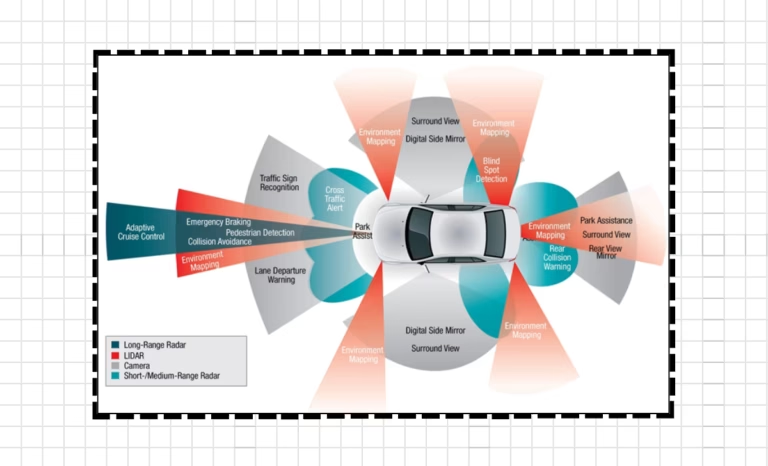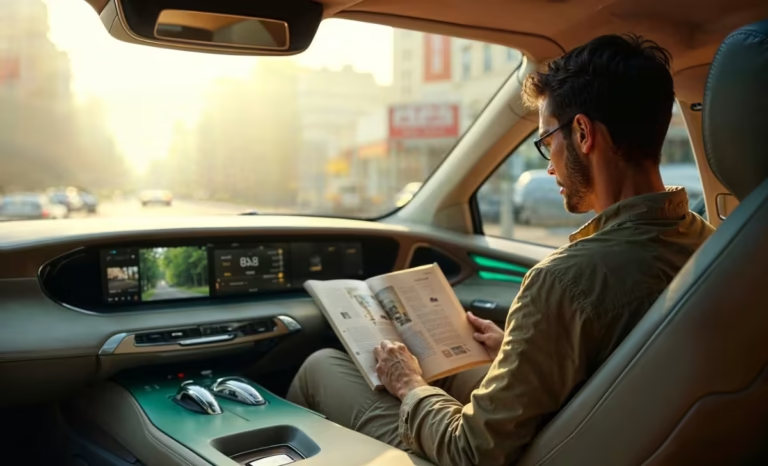Because of their adaptability, compact size, and capacity for a range of terrains, sport utility vehicles (SUVs) have become increasingly popular in recent years. But with so many alternatives available, picking the best SUV may be difficult. We’ll walk you through the process of choosing an SUV that fulfills your requirements in our step-by-step guide.
In this article
In this article
Step 1: Determine Your Needs
Identifying your needs is the first step in choosing an SUV. Are you searching for a luxury vehicle, a family automobile, or a car for outdoor and adventurous activities? Think about how many passengers and how much baggage space you’ll need to transport. Consider the road conditions in your location, your driving style, and the terrain you’ll be driving on. This will enable you to focus your search and select an SUV that perfectly suits your requirements.
Capacity for Passengers: Consider the number of persons you will need to transport on a regular basis. If you have a big family or routinely travel with large groups of people, an SUV with a third row of seating may be necessary.
Cargo Space: Consider how much storage space you will require. If you frequently move bulky things or sports equipment, an SUV with a large cargo area may be necessary.
Terrain: Consider the routes and terrain you’ll be traveling on. If you often drive on unpaved or rough roads, an SUV with four-wheel drive or all-wheel drive may be necessary.
The capacity of Towing: If you intend to tow a boat or trailer, an SUV with a large towing capacity may be required.
Fuel Efficiency: While many SUVs are known for their high fuel consumption, some models offer better gas mileage than others. If fuel efficiency is a priority for you, consider a hybrid or electric SUV.
Step 2: Consider Your Budget
Before you begin to search for an SUV, it’s important to decide on your budget because they fluctuate widely in price. Make a decision on your budget and stick to it. Consider fuel expenditures, maintenance, insurance, and repairs because the cost of ownership goes beyond the purchase price.
The total cost of ownership: The price of an SUV is only the beginning. You should also think about the total cost of ownership, which includes continuing costs like gasoline, maintenance, repairs, insurance, and registration fees. Remember to include these expenses in your budget.
Options of financing: Consider the monthly payment you can afford if you intend to finance your SUV. Compare interest rates and financing alternatives to discover the best price. Remember that while a longer loan period may result in a cheaper monthly payment, it will raise the overall cost of the car over time.
Value at resale: Think about the SUV’s potential resale value before making a purchase. This might assist you in making a more knowledgeable choice regarding the total cost of ownership. It’s crucial to complete your study since certain SUVs hold their value better than others.
Trade value: Think about your car’s trade-in value if you intend to trade it in to help pay for your new SUV. This might have an effect on how much financing you require, which would then have an effect on your monthly payment and overall cost of ownership.
Additional features: SUVs might cost more money because of a variety of add-on amenities. Think about the things you absolutely require and the ones you can live without. By doing this, you may save money and still get the SUV that best suits your needs.
Step 3: Research Your Options
It’s time to look into your possibilities once you’ve established your needs and spending limit. To choose which SUVs best suit your needs, look at their features and characteristics. Make a list of the SUVs that attract your attention, and weigh the advantages and disadvantages of each. View safety ratings and reviews from other SUV owners.
SUV Size: Consider the size of the SUV you need, based on the number of passengers and the amount of cargo space you require. SUVs come in different sizes, including compact, mid-size, and full-size.
Fuel Economy: Look at the fuel economy of different SUVs, especially if you’ll be using the vehicle for long commutes or extended road trips. Check the estimated MPG for both city and highway driving.
Performance: Look at the engine power, transmission, and drivetrain options of the SUVs you’re considering. Consider whether you need an SUV with all-wheel or four-wheel drive, or if a two-wheel drive option will suffice.
Safety features: Check the SUVs on your list’s safety ratings and attributes. Along with increasingly sophisticated safety systems like lane departure alerts and blind-spot monitoring, look for equipment like airbags, anti-lock brakes, and stability control.
Price: Examine the costs of the SUVs you are considering, taking into account any options or upgrades that could impact the price. Also take into account the vehicle’s resale value, since this might have an impact on the overall cost of ownership.
Step 4: Take a Test Drive
Before making a final decision, it’s essential to take a test drive. This will give you a better idea of how the SUV handles, its comfort level, and its overall performance. When test driving, pay attention to how it feels on different terrains, how it handles turns, and how easy it is to park.
Comfort: Pay attention to the comfort level of the SUV, including the seats, headroom, legroom, and overall feel of the interior.
Handling: Test the SUV’s handling by driving it on different types of terrain, such as highways, city streets, and unpaved roads. Pay attention to how it feels on turns, accelerations, and decelerations.
Visibility: Check the SUV’s visibility, including the rearview mirror, side mirrors, and blind spots. Consider features such as backup cameras, parking sensors, and blind-spot monitoring systems.
Noise level: Listen to the sound level of the SUV, including engine noise, road noise, and wind noise. A quieter cabin can provide a more comfortable ride.
Cargo space: If you plan on using your SUV for hauling cargo, make sure to check the cargo space. Consider how easy it is to load and unload cargo, and whether the space is sufficient for your needs.
Step 5: Consider Fuel Economy
SUVs are known for their fuel consumption, so it’s important to consider the vehicle’s fuel economy. Look for SUVs with good gas mileage to save money in the long run. Hybrid and electric SUVs are also available for those looking for a more eco-friendly option.
Check the MPG: Look for SUVs that have high fuel economy ratings in miles per gallon (MPG) on both city and highway driving. The higher the MPG, the more fuel-efficient the SUV is.
Engine size: Consider the engine size of the SUV, as it can affect fuel economy. A smaller engine typically offers better fuel economy than a larger one.
Transmission: The type of transmission can also impact fuel economy. Automatic transmissions typically offer better fuel economy than manual ones.
Electric and hybrid options: If you’re looking for the most fuel-efficient choices, think about hybrid and electric SUVs. SUVs that are electric run only on electricity, whereas hybrid SUVs combine a gasoline engine and an electric motor.
Driving styles: Fuel efficiency might also be impacted by your driving style. Driving aggressively or in stop-and-go traffic, for instance, can reduce fuel efficiency. Search for an SUV that is tailored to your driving preferences after taking into account your normal driving practices.
Step 6: Check Safety Features
When buying an SUV, safety should come first. Consider looking for features like backup cameras, electronic stability control, airbags, and antilock brakes. Consider features like lane departure alerts, front collision warning systems, and blind-spot monitoring as well.
Airbags: Look for an SUV with multiple airbags, including front, side, and curtain airbags. This provides extra protection for passengers in the event of a collision.
Antilock brakes: Antilock brakes help prevent the wheels from locking up during hard braking, which can help the driver maintain control of the vehicle.
Electronic stability control: This technology helps prevent skidding and loss of control by detecting when the vehicle is starting to slide and applying the brakes to individual wheels as needed.
Backup cameras: These cameras provide a clear view of what’s behind the vehicle, helping drivers avoid collisions while reversing.
Blind-spot monitoring: This feature alerts the driver when there is a vehicle in their blind spot, reducing the risk of collisions when changing lanes or merging.
Step 7: Check for Technology Features
SUVs are available with a wide range of technological features, including modern driver assistance systems and entertainment systems. Think about the technological elements that are crucial to you, such as smartphone integration, Bluetooth connectivity, and touchscreen displays.
Informational System: Choose an infotainment system with a wide range of capabilities, including Bluetooth connectivity, navigation, voice recognition, and smartphone integration. Accessing functions while operating a vehicle may be made simpler by a user-friendly interface.
Sound System: Look for an audio system that has a decent number of speakers, a subwoofer, and an amplifier to deliver great sound quality. Premium sound systems from renowned audio companies, such Bose or JBL, are available in several SUVs.
Driver Support Technologies: Adaptive cruise control, lane departure alerts, blind-spot monitoring, and rearview cameras are a few things to look for. Driving can become safer and more convenient with the aid of these features.
Connectivity: Verify whether the SUV has several USB ports, 12-volt power outlets, and wireless smartphone charging. While traveling, these features can keep gadgets connected and charged.
Rear Seat Enjoyment: Consider an SUV with rear-seat entertainment systems, such as DVD players, streaming displays, or HDMI connectors for gaming consoles, if you have children or regularly travel with passengers. During lengthy rides, these amenities may keep passengers comfortable and amused.
Step 8: Consider the Resale Value
The SUV’s resale value must be taken into account when buying a new one. Long-term savings are possible with SUVs with high resale values, particularly if you want to trade in or sell the car.
The reputation of a brand: In general, companies with a solid track record of dependability and toughness tend to keep their value better. Choose companies that have a history of creating high-caliber automobiles.
The popularity of Models: A particular SUV model’s resale value may be significantly impacted by its level of popularity. Due to their great demand, famous models are likely to hold their value better than less well-known ones.
Mileage: An SUV’s resale value will decline as its mileage increases. When comparing SUVs, think about how many miles have already been put on them and how many you anticipate putting on them in the future.
Condition: The condition of the SUV might also have an effect on its resale value. Look for SUVs that have been well-kept and show little wear and tear. Examine it for any dents, scratches, or other damage that may reduce its value.
Features and options:
The upgrades and amenities that come standard on an SUV can also impact its resale value. Look for SUVs with desirable amenities like leather seats, a sunroof, or a quality sound system. These additions can boost the value of the SUV and make it more enticing to potential purchasers.
Choose an SUV: FAQ
Also, check How to choose the Best Motorcycle for Beginners




